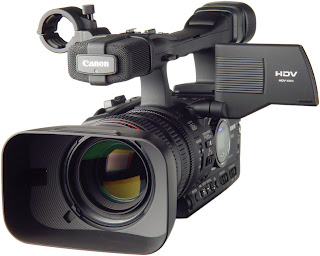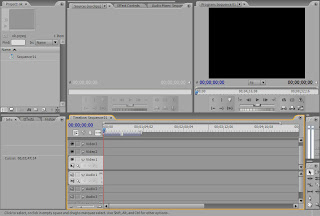
However, we also used still cameras for the research process too. This was so we could experiment with interesting shots and trigger our creativity for when it came to actually filming. We focused on cinematography using still images so that when we used the Canon camera during production our composition could be a lot more interesting. We also used this technique during the planning stages of our film because once we had planned a story and drawn up a storyboard, we could then venture out onto location and take pictures using still cameras to generate a photo storyboard. This proved to be valuable because it saved time on the actual day of filming; we already knew which shots looked good via the photo storyboard.
Throughout all the stages of production, we used an online blog in order to produce innovative work that shows our ability to work with new technologies alongside our individual creativity; and we’re still using it now. We used this to our advantage because even though we work in groups to produce our film, the blog is our tool to present how much effort and knowledge we have personally put into it. As well as this, using an online blog instead of a log book meant that we could access it from any computer and therefore reduced possible limitations. This brings me to the use of the internet - the most predominantly used technology for all stages of production. We were constantly researching about all aspects of our coursework; themes of the fall, existing examples of interesting ways to use a camera, existing double acts etc. The use of the internet was a very valuable technology that helped us every step of the way.
 Another way in which we used the internet was to find soundtrack for our film. Obviously we used the sound equipment whilst filming for ambient sounds but for non diegetic soundtrack we had to download copyright free tracks from the internet. Furthermore, popular sites such as youtube.com, kizoa.com and slideshare.com meant that we could present our research as innovatively as possible. Posting clips of films/director interviews to back up our own ideas and making slideshows of images rather than posting endless pictures onto the blog. It demonstrated student initiative and confidence with technology we may not necessarily use everyday.
Another way in which we used the internet was to find soundtrack for our film. Obviously we used the sound equipment whilst filming for ambient sounds but for non diegetic soundtrack we had to download copyright free tracks from the internet. Furthermore, popular sites such as youtube.com, kizoa.com and slideshare.com meant that we could present our research as innovatively as possible. Posting clips of films/director interviews to back up our own ideas and making slideshows of images rather than posting endless pictures onto the blog. It demonstrated student initiative and confidence with technology we may not necessarily use everyday. During the construction of the ancillary tasks I predominantly used Photoshop for my posters and a word document for my review. I was already comfortable using Photoshop due to my experience at GCSE and so this gave me an advantage to add effects and write on the image I used for my poster adverts. I used the eraser to remove the existing license plate and then added my own text to it instead. Additionally, my review was set out to look like an existing magazine review and I thought the simplest way to do this was by using a word document as I am very aware of the functions and options available to me on word. This proved to be easy for me as I used text boxes to single out columns on a page, and I could copy and past images from the internet to be pasted with that film review.
Adobe Premier Pro is the software we used to edit our film. This technology allowed us to digitise our rushes taken on location and sort them on a timeline for us to begin piecing our film together.
 Not only did the software let us sort through our film but it also allowed us to add effects, slow down or speed up the duration of scenes and let us add titles of text to illustrate which day it was. We incorporated numerous dip to black effects that we used for transitions into other scenes. Additionally, at the end we even used a dip to white for when Frank blows flour into Big Pete’s face. As well as this, after receiving our audience feedback we used technology to improve the film. We originally had the switching of the briefcase in black and white but we took this effect off when one audience member couldn’t work out what was in the briefcase. The software made it really easy for us to make changes as the tools were easy to find. Aspects like this enabled us to produce a successful final film and even if we didn’t use some of the effects we tried out, the technology helped us experiment with what worked and what didn’t. To conclude, we constantly used technologies even when we weren’t filming, and all of the technologies we did use, we benefited from.
Not only did the software let us sort through our film but it also allowed us to add effects, slow down or speed up the duration of scenes and let us add titles of text to illustrate which day it was. We incorporated numerous dip to black effects that we used for transitions into other scenes. Additionally, at the end we even used a dip to white for when Frank blows flour into Big Pete’s face. As well as this, after receiving our audience feedback we used technology to improve the film. We originally had the switching of the briefcase in black and white but we took this effect off when one audience member couldn’t work out what was in the briefcase. The software made it really easy for us to make changes as the tools were easy to find. Aspects like this enabled us to produce a successful final film and even if we didn’t use some of the effects we tried out, the technology helped us experiment with what worked and what didn’t. To conclude, we constantly used technologies even when we weren’t filming, and all of the technologies we did use, we benefited from.
No comments:
Post a Comment